Witnesses of history, they have been places of worship and at the same time marvels of art and engineering: below we suggest you twelve churches absolutely to be seen during your travel-itinerary in Emilia Romagna.
Nothing represents better the historical, artistical and cultural landscapes that our Land has seen over the last 2000 years than the Italian churches.
The great part of social, economic and political life took place around these buildings, attracting wealth and assets that were then invested in the construction of such beauties.
The greatest artists and craftsmen of the time worked on the architectures, the columns and the façades of the churches, giving life to works that we admire astounded still today when we walk down their naves.
Emilia-Romagna enshrines in its cities of art and territory amazing churches, some of which are, in my opinion, among the most suggestive churches in the entire world.
Now, put aside your religious beliefs and follow us on this tour to discover the most beautiful basilicas and cathedrals in our region.
Cathedral of Santa Maria Assunta e Santa Giustina
Place: Piacenza
Period of construction: 11th – 12th century
Architectural style: Romanesqu art
Curiosities: the big dome built by Guercino is entirely visitable, at an arm-distance form the frescoes of the dome and at a 40m-height from the ground
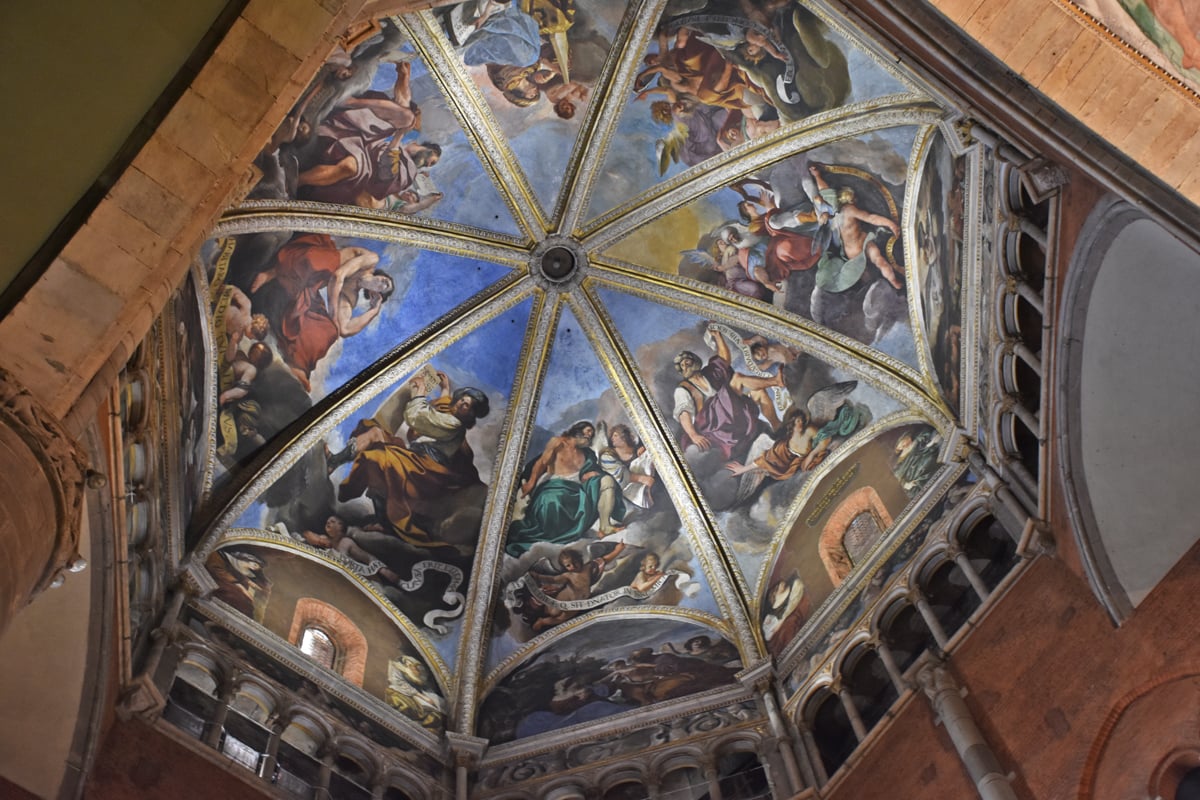
It was built during the period of the big Medieval factories, like the ones of Parma Cathedral and Modena Cathedral, and it represents one of the most important religious monuments of Romanesque architecture in Italy.
Here, the 13th-century art perfectly connects with the Baroque style of the painted decorations, which find the culmination of expression in the great dome.
Basilica of San Colombano
Place: Bobbio (Piacenza)
Period of construction: 11th – 16th century
Architectural style: Romanesque/Gothic art
Curiosities: in the Middle Ages, it was a fundamental stop for all the pilgrims who were headed to Rome along Via Francigena
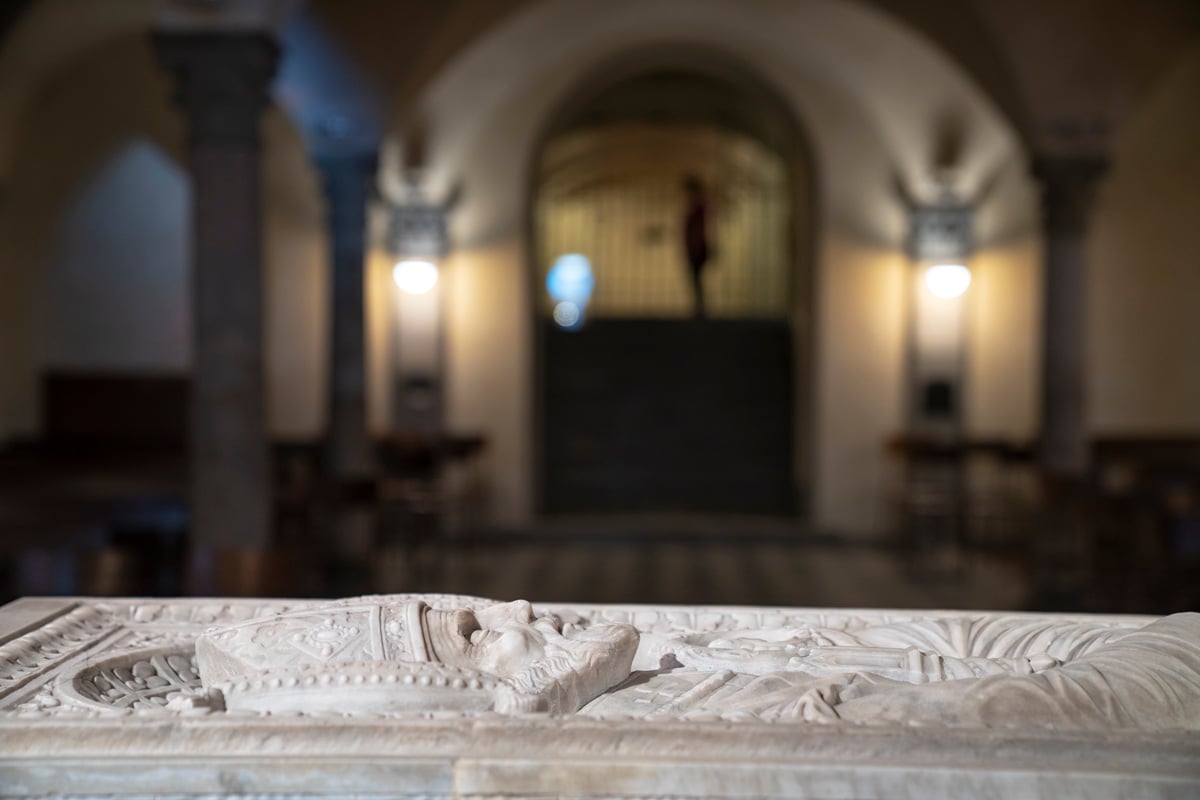
“Terribilis est locus iste” (this place is awful): this is the admonition to respect this sacred place you read when you enter the Basilica of San Colombano. In was built in 1456 over the remains of a former church, around one of the most important monastic centres of those times.
The building is strictly linked to the adjacent abbey dating back to 614 A.D. founded by Colombano, one of the most important saints as regards Europe’s evangelisation.
Temple of The Blessed Virgin of Ghiara
Place: Reggio nell’Emilia
Period of construction: 16th century
Architectural style: Renaissance art
Curiosities: the church was built thanks to the offers of the worshippers after a miracle linked to an image of the Vergin, who was in that place
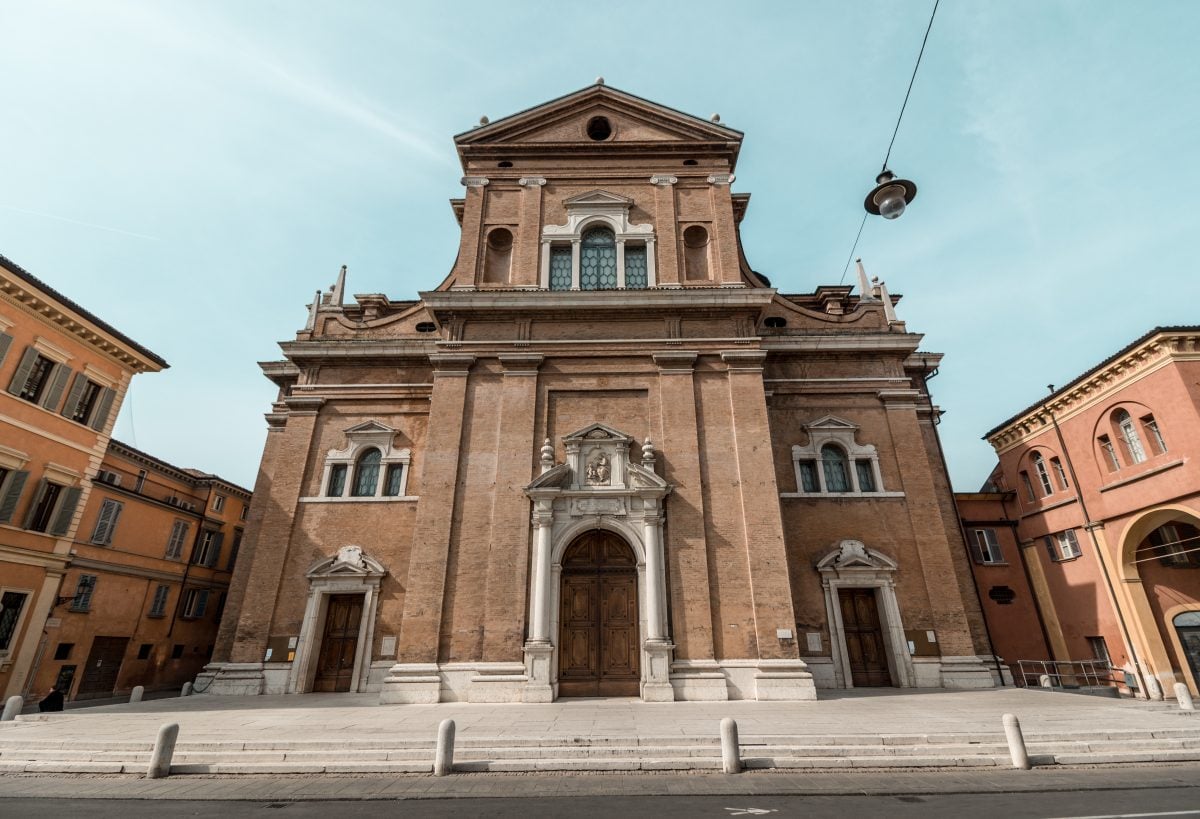
Deeply bond to the community of Reggio Emilia, the basilica dominates the centre of the city, in an area named “Ghiara or Giarra”, which means “gravelled area”.
Designed by Alessandro Balbo, starting from 1597, it fully expresses the artistic production of the regional capital between Renaissance and Baroque, especially as regards the inner spaces, where there is preserved the greatest Emilian painting art and mastery of the first half of the 7th century.
Fidenza Cathedral
Place: Fidenza (Parma)
Period of construction: 12th century
Architectural style: Romanesque art
Curiosities: in the Middle Ages, it was a fundamental stop for all the pilgrims who were headed to Rome along Via Francigena
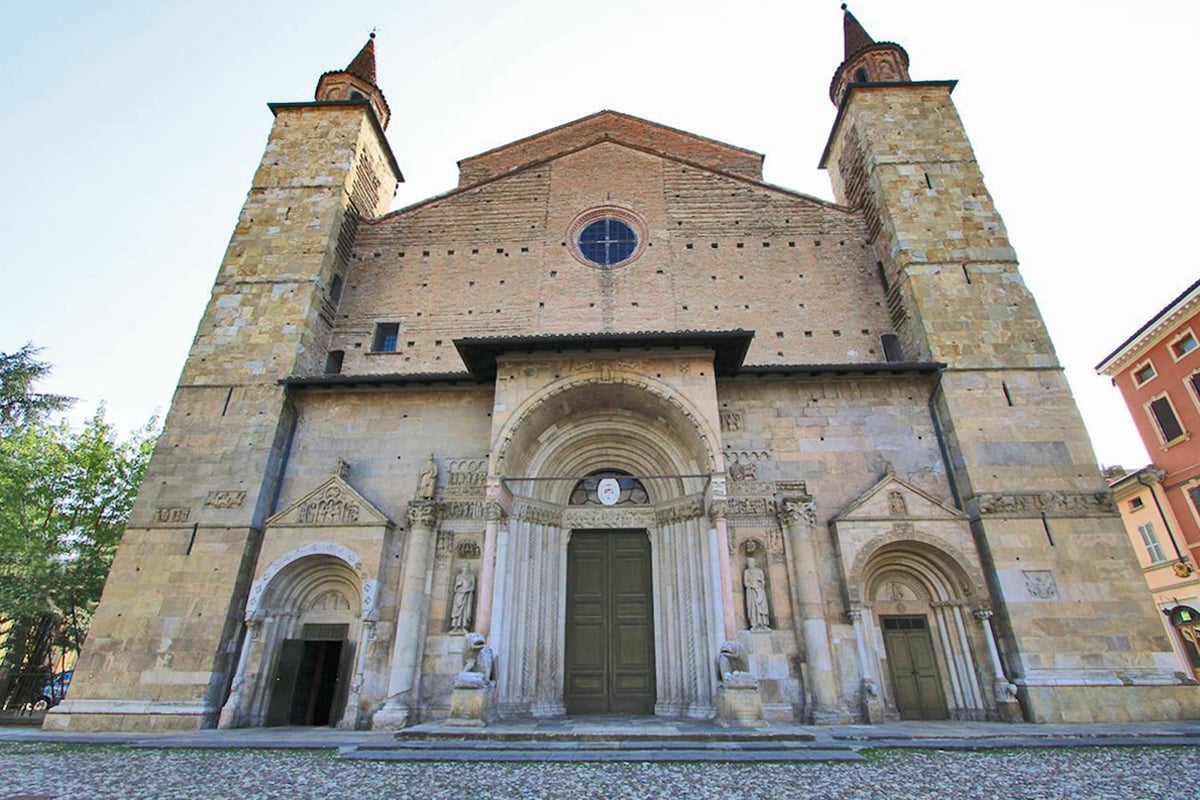
Great Middle Ages scholar Jacques Le Goff defined it as “superb”, the Fidenza Cathedral boasts a millennial history linked to the worship of San Donnino, a martyr who lived during the 3rd century A.D. at Massiamiano’s court.
It is simple and crude as regards its plant, and it is considered to be one of the highest examples of Romanesque architecture in the Po Valley, mostly thanks to the artwork by Benedetto Antelami‘s workshop, one of the main sculpture schools in Europe of the times.
Parma Cathedral
Place: Parma
Period of construction: 11th – 12th century
Architectural style: Romanesque art
Curiosities: it is said that Tiziano, passing by Parma, looking at the cupola frescoed by Correggio was left in such amazement that he said: “Turn it upside down, fill it with gold, and yet, it won’t be paid enough”
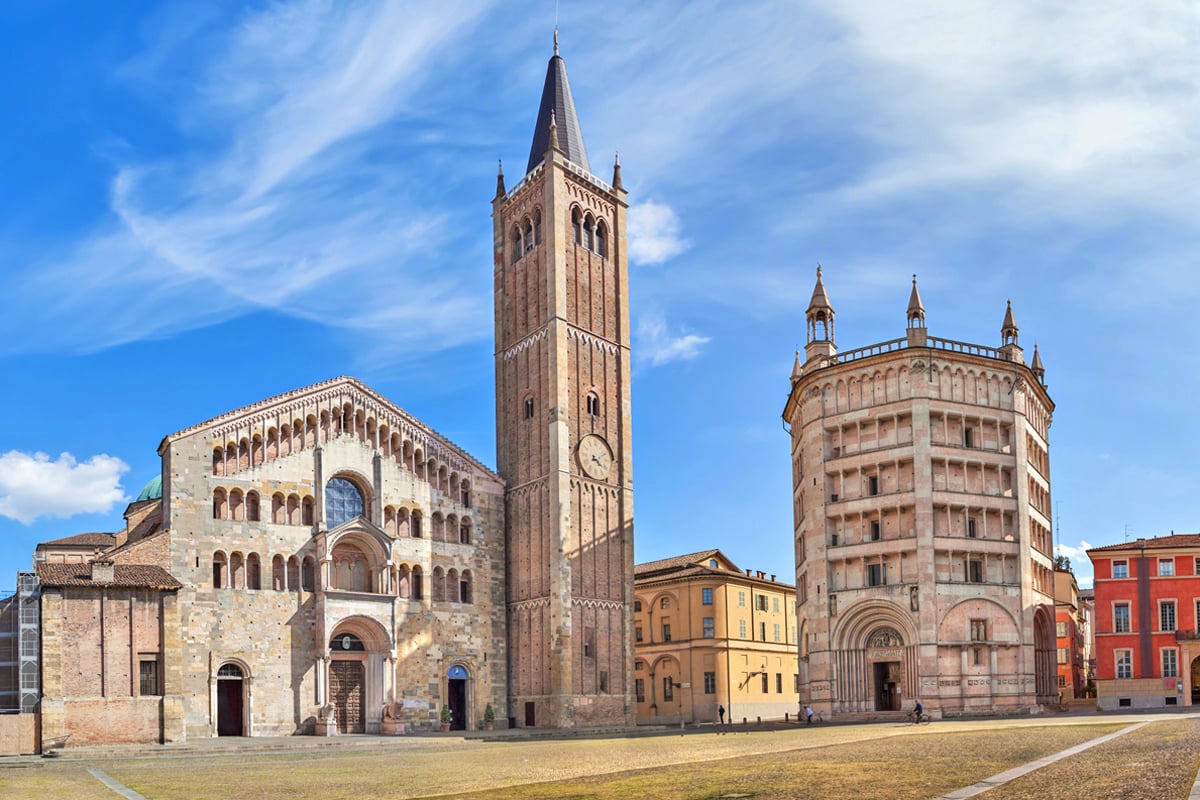
Together with its baptistery, Parma Cathedral has been representing for more than 900 years a place of arts, history and worship among the most renowned in the Italian Middle Ages.
It is a unique complex able to synthesize the essence of Romanesque art, embodied by the bas-reliefs by Benedetto Antelami, with the wealth of Renaissance Art of the dome by Correggio.
Church of San Silvestro
Place: Nonantola (Modena)
Period of construction: 12th century
Architectural style: Romanesque art
Curiosities: the crypt, made of a “forest” of 64 tiny columns, is one of the widest Romanesque churches in Europe
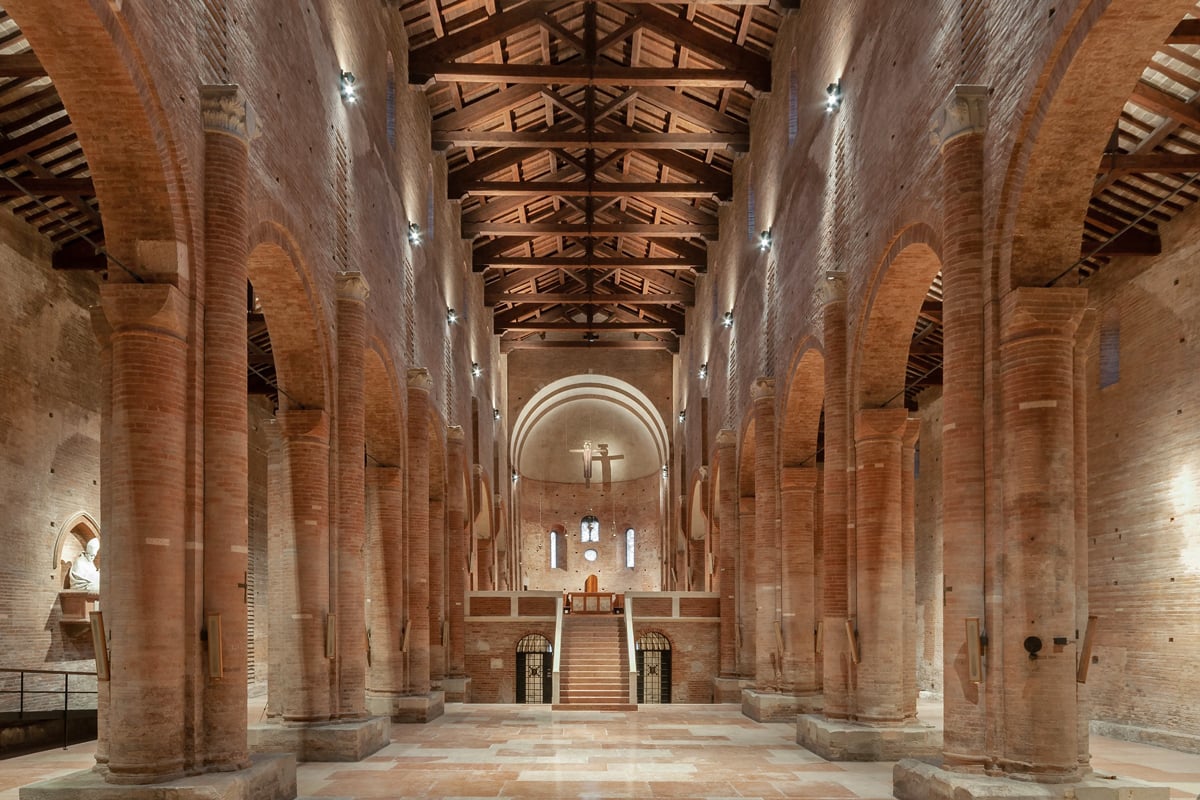
It was built in the 11th century, on the remains of another church. The Romanesque-Lombardo shaped building is part of the abbey of San Silvestro, requested by Longobard Duch Astolfo towards the half of the 8th century.
Over the centuries, it became a meeting place for popes, emperors and, most of all, of the community of monks that followed one another in this little city of the Modena valley.
Cathedral of Santa Maria Assunta in Cielo e San Geminiano
Place: Modena
Period of construction: 11th – 14th century
Architectural style: Romanesque style
Curiosities: in the bas-relief on the Cathedral’s north portal, known as Porta della Pescheria, according to some people, are sculpted images telling the story of King Arthur and that – if it’s true – would be the most ancient representation in history ever created in Italy
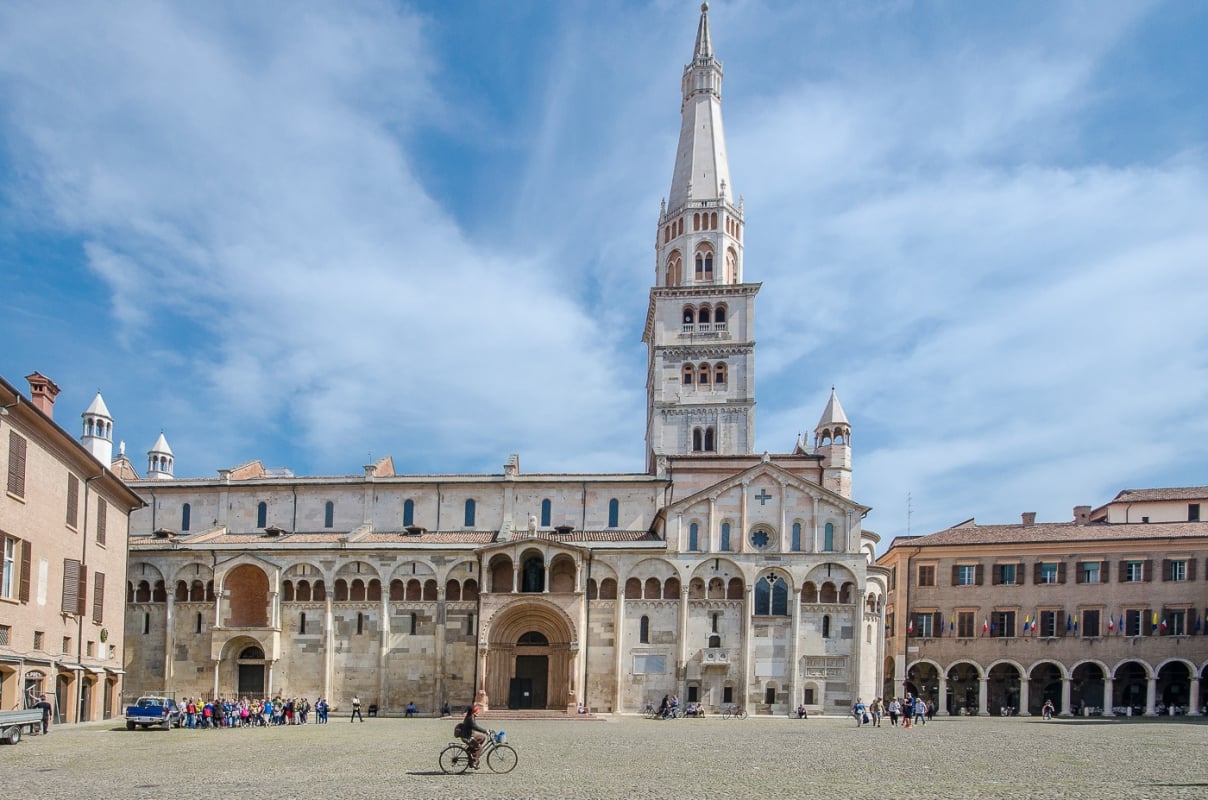
Together with Tower Ghirlandina and the nearby Piazza Grande, it is one of the greatest monuments of Romanesque art in Europe, a World Heritage Site.
Built-in 1099 after the local social classes’ will, the Cathedral seems a real “living” structure because of the decorative figure-shaped sculptures placed anywhere that create a perfect synthesis between the ancient culture and the New Lombard Art.
The complex of Santo Stefano
Place: Bologna
Date of construction: 4th century – …
Architectural style: Early Christain Romanesque, Gothic style
Curiosities: in the crypt dedicated to Sint John the Baptist is a column without its capital. The column was brought in Bologna by Bishop Petronio, who was coming back from the Holy Land. According to traditions, the column has the same height as Jesus
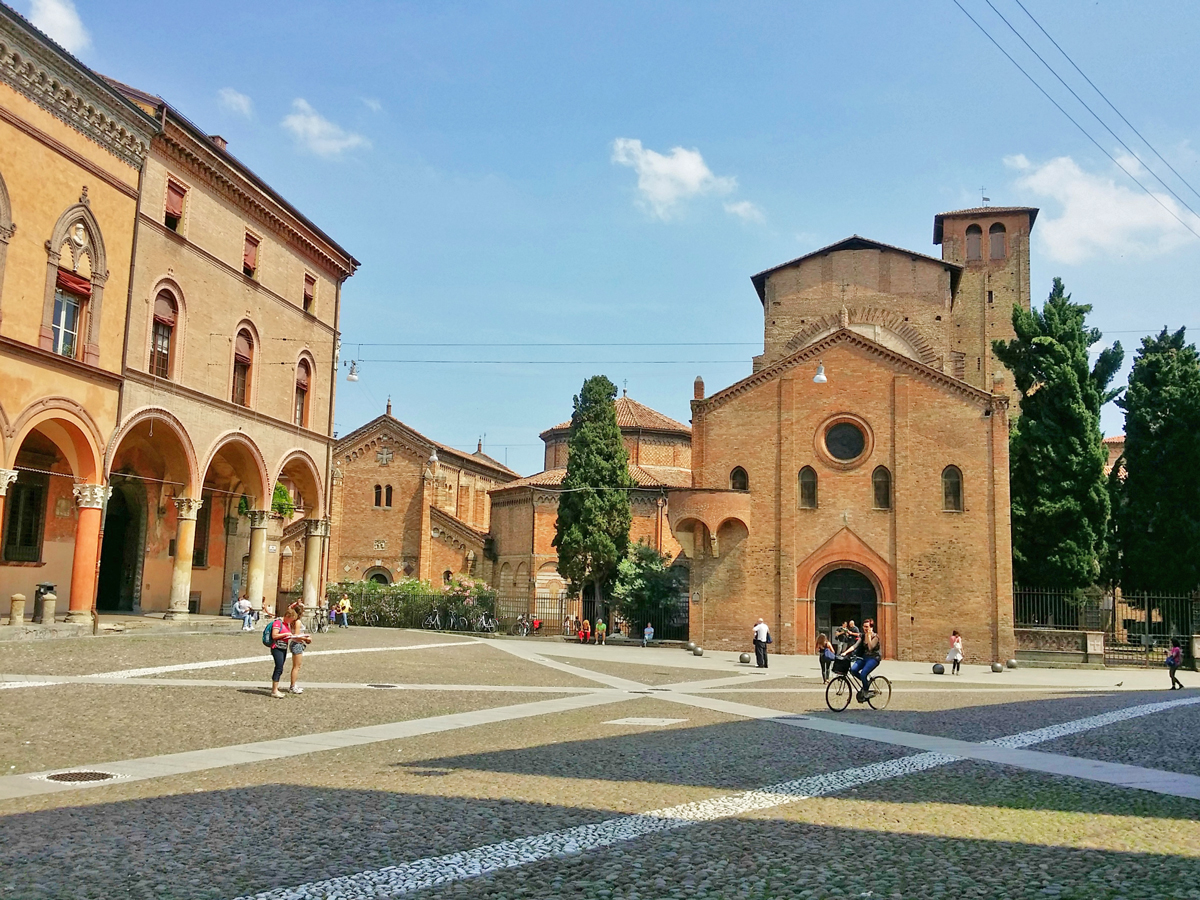
From Modena, we move to Bologna. Here, only 2 steps away from the Two Towers, you will find the Complex of Santo Stefano, a real sanctuary for the local faith.
It was raised on an ancient pagan temple and it was initially designed to become a faithful copy of the Church of the Holy Sepulchre in Jerusalem.
Over the centuries, it underwent then a series of improvements and changes until arriving at what it looks like today: an articulated complex built by a set of sacred buildings known as the “seven churches” – tireless witnesses of humankind’s history.
Basilica of Santa Maria di Pomposa | Codigoro
Place: Codigoro (Ferrara)
Date of construction: 6th – 7th century onwards
Architectural style: Romanesque art
Curiosities: in this abbey, at the beginning of the 11th century, the Benedictine monk Guido D’Arezzo invented the modern music notation, first creating the tetragram, and later the current staff
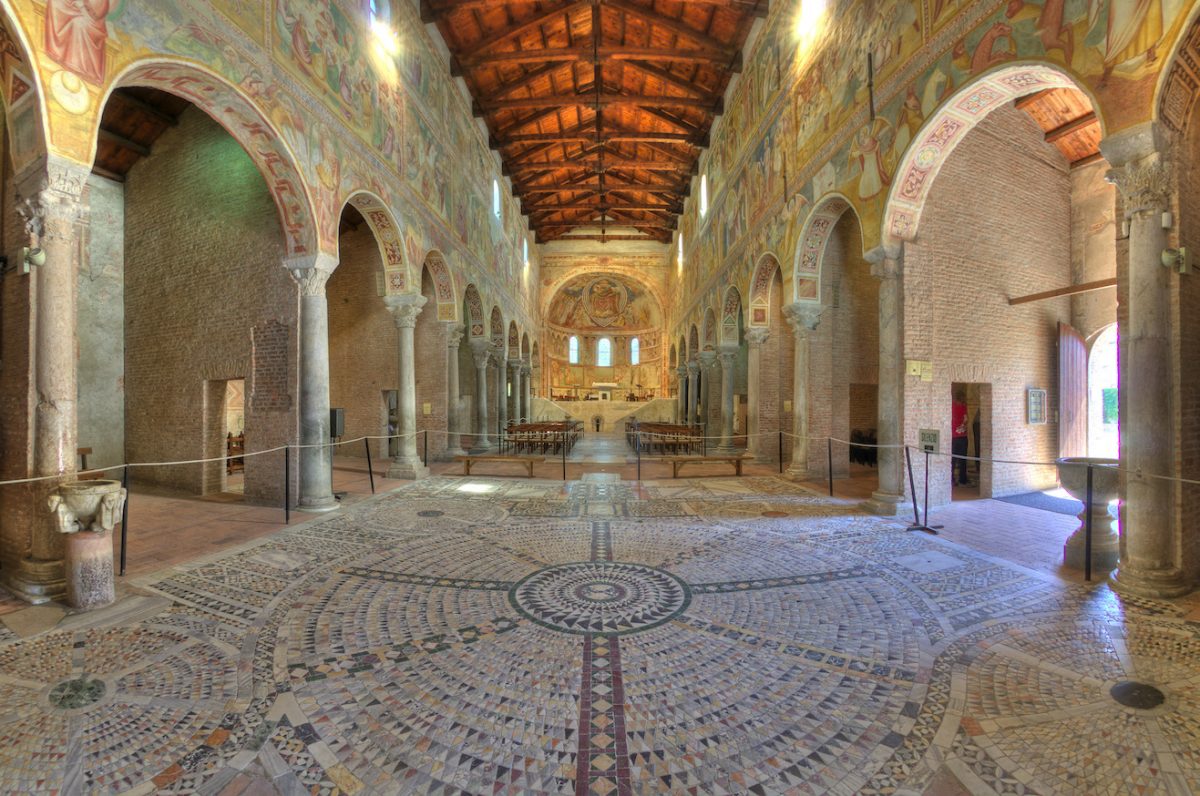
Driving along the state road 309, also known as “Romea”, which connects Ravenna to Mestre, you meet the Po Delta Valley, and – suddenly – the high belltower on its border appears. With Ravenna-Byzantine origin, it the Church of Santa Maria can be ascribed to the 6th-7th century A.D.
Towards the year 1000 A.D., it reached its peak: the complex turned into one of the most important monasteries of Northern and central Italy, welcoming guests like Dante Alighieri and Pier Damini and acquiring wealth with treasures of art like the cycle of frescoes inspired to the style of Giotto inside the Basilica.
Basilica of Sant'Apollinare in Classe
Place: Ravenna
Period of construction: 6th century
Architectural style: Early-Christian and Byzantine art
Curiosities: it was defined as the best example of Early-Christian Church in the world
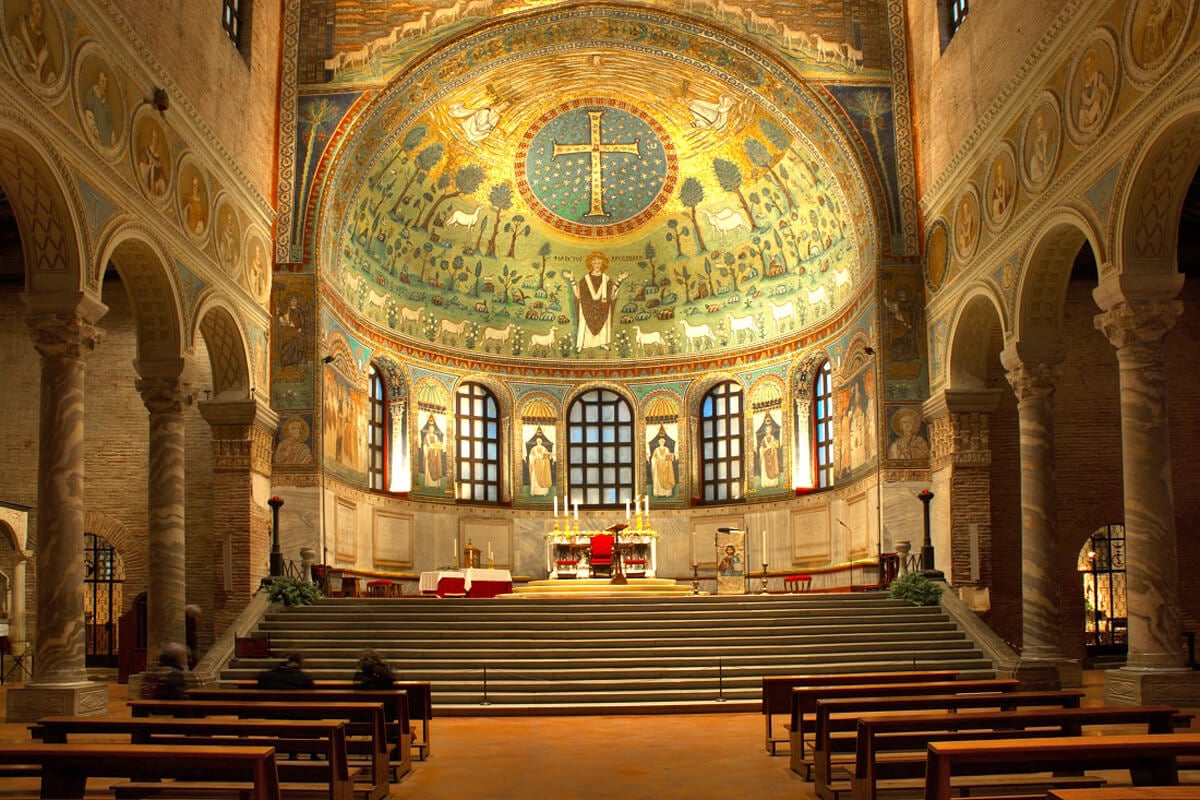
Heading 8km South to the city centre of Ravenna, we find maybe one of the most beautiful basilicas in the world. Declared Unesco World Heritage, solemn and suggestive in its decorations, it looks simple and linear in its architectural forms.
Three big naves follow one another with a great central apsis oriented to the east. Many think that here, in the vault, are enshrined the most beautiful polychrome mosaics of Early Christianity.
Basilica of San Vitale
Place: Ravenna
Period of construction: 6th century
Architectural style: Early Christian and Byzantine art
Curiosities: an astounding labyrinth in mosaic on the floor stretches out in an itinerary that ends into a big mussel, the symbol of birth and resurrection
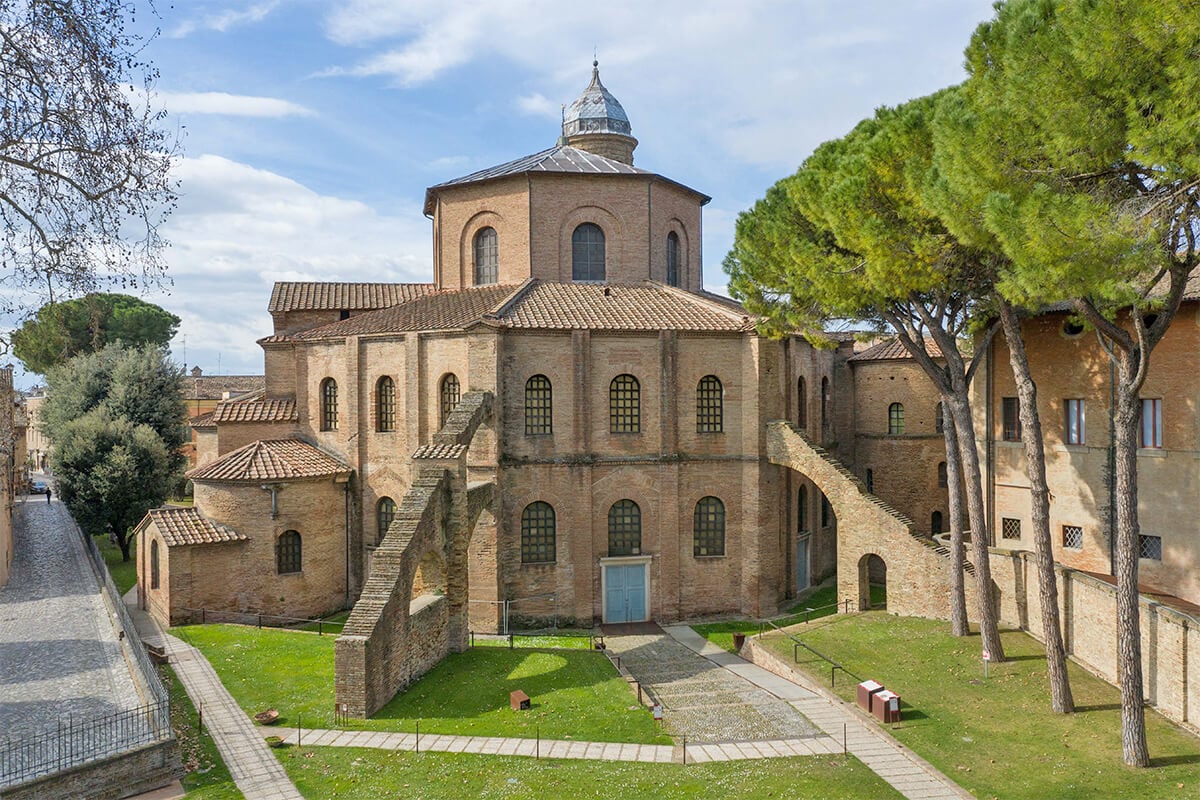
It is one of the most important Early-Christian basilicas in the world and it is a building capable of synthesizing in itself artistic, oriental and western element thanks to the brightness of the Byzantine mosaic art.
It was built by Emperor Justinian to celebrate his power and, it realises an irresistible attractive force, especially thanks to the fascinating mosaic decorations of the apsis and by the Baroque frescoes of the dome.
Cathedral of Santa Colomba (Malatesta Temple)
Place: Rimini
Period of construction: 9th – 12th century
Architectural style: Renessaince art with some Gothic elements
Curiosities: the façade of the temple, which was left incomplete, was built by Leon Battista Alberti, who took inspiration from the Classical architecture, as, for instance, the nearby Arch of Augustus
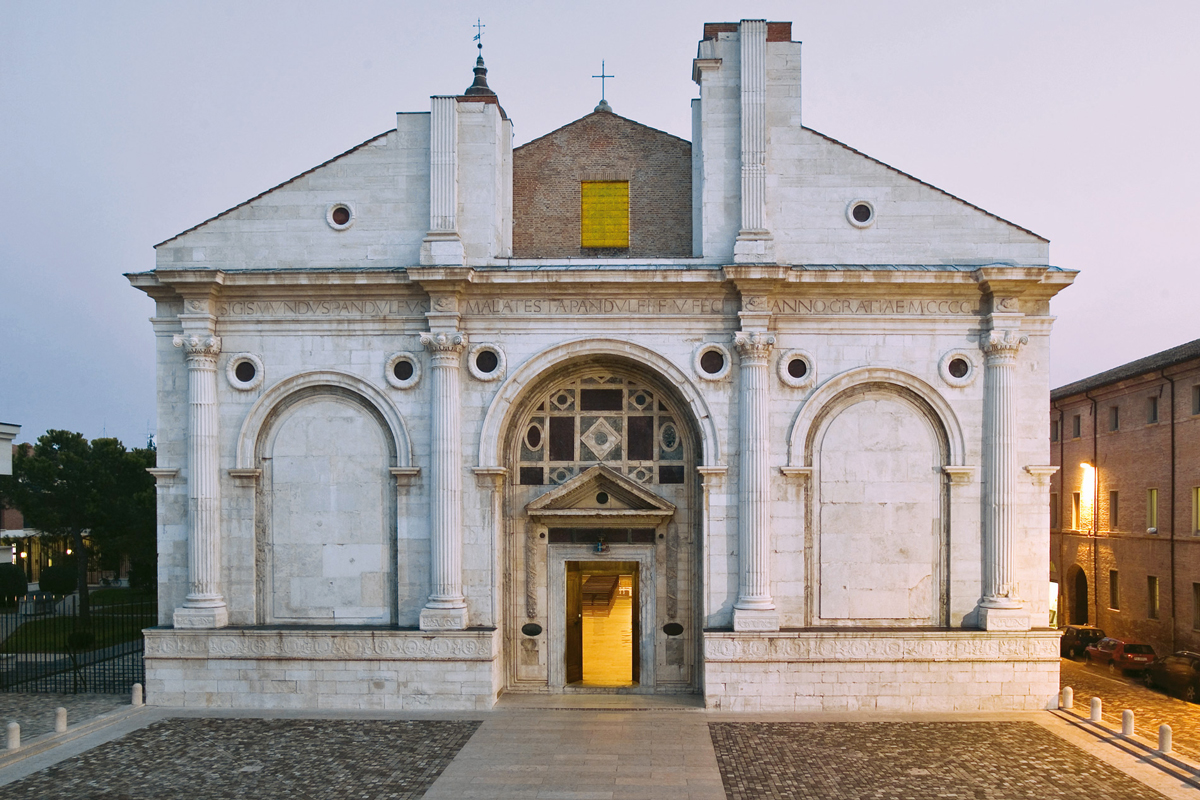
Entering the Malatesta Temple is almost like entering a pagan temple: it was thought and built to celebrate the ambitions of the lord of the city, Lord Sigismondo Pandolfo Malatesta, and it is one of the most important architectures dating back to the 5th century.
Some of the most renowned artists of the time took part to the construction, such as Leon Battista Alberti, Piero Della Francesca and Agostino d Duccio, leaving to this monument its distinctive feature
Author

Davide Marino
Davide Marino was born archaeologist but ended up doing other things. Rational – but not methodic, slow – but passionate. A young enthusiast with grey hair
You may also like
Churches in Emilia Romagna: the most beautiful façades
by Davide Marino /// April 23, 2020
The most beautiful Parish Churches in Emilia-Romagna
by Davide Marino /// February 28, 2019

Interested in our newsletter?
Every first of the month, an email (in Italian) with selected contents and upcoming events.
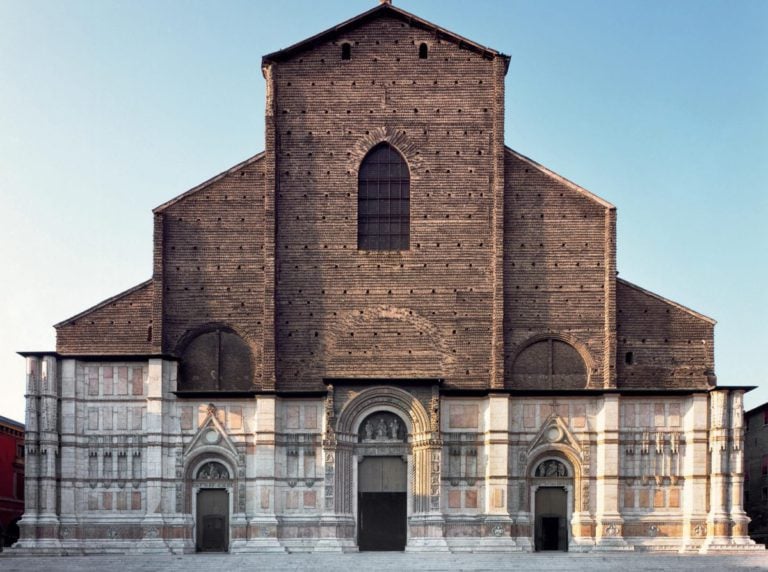
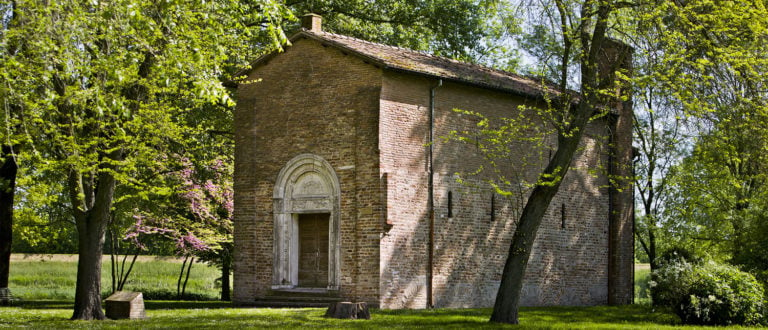
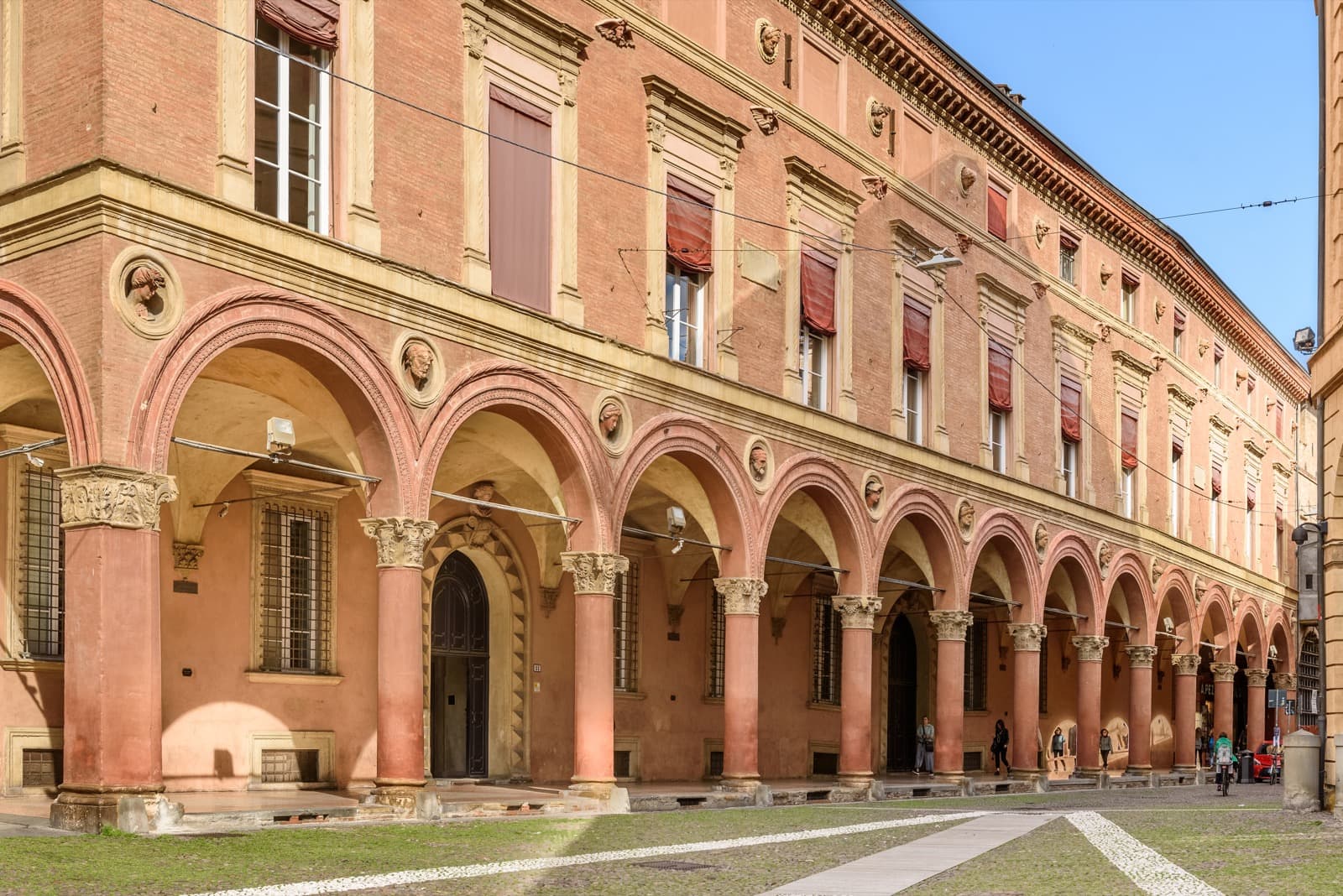
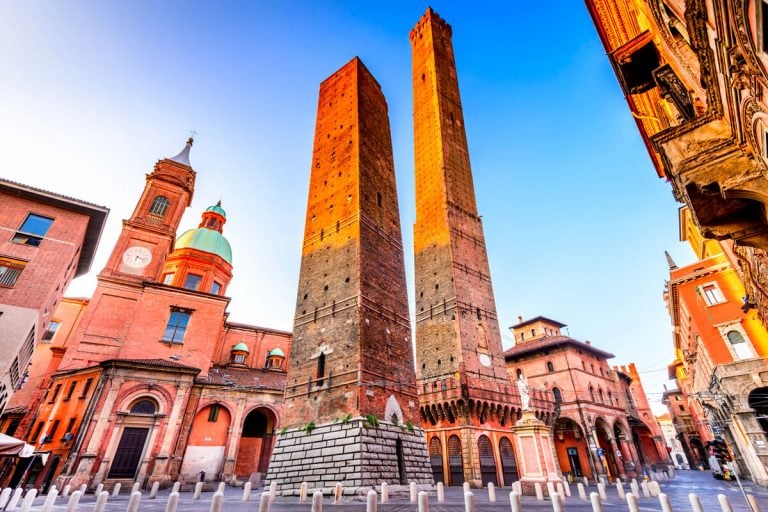
george visser
Good morning mr. Davide Marino,
We are staying in Brisighella end april. Can you give us some hints for visiting roman churches in the vicinity (within a circle of 100 km)? Also the small ones.
thank you for answering
George
Holland
Davide Marino
Hi George, I suggest you use this useful tool: http://www.tourer.it/mappa?lang=en
Thanks to a map search, you can locate and geolocalize all the main cultural emergencies of Emilia Romagna (including Roman churches). Tourer allows the slow traveler to discover and explore hundreds of wonderful places, some of them are well known and some others are less. Furthermore, everybody can improve Tourer, by sending comments and photographs and signaling sites that it does not comprise.
I hope this will help you
Best regards
Davide – staff #inEmiliaRomagna